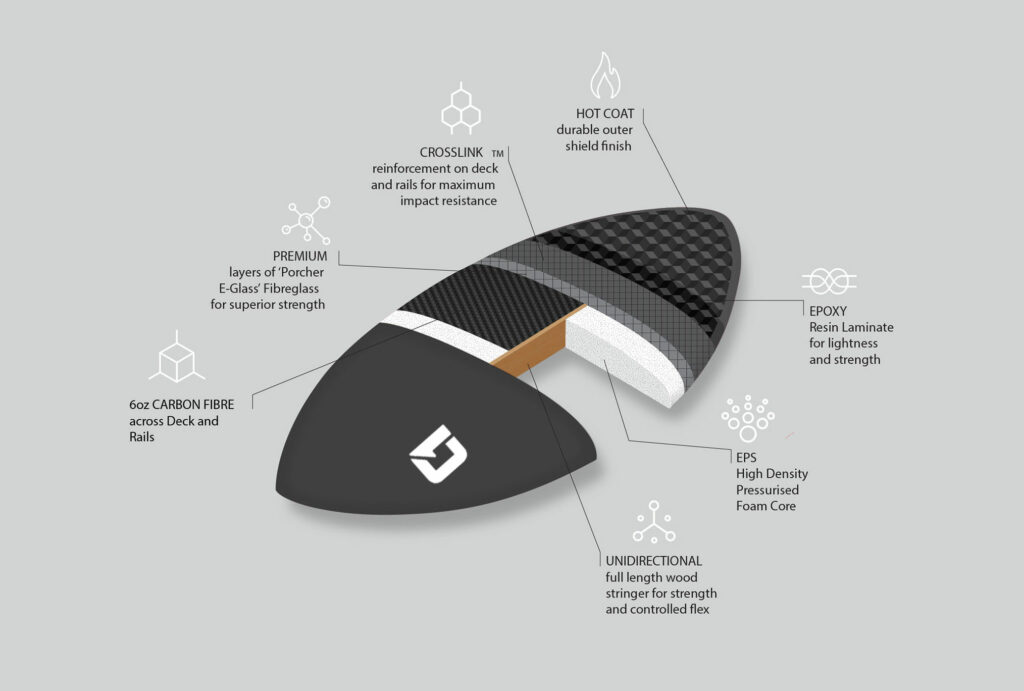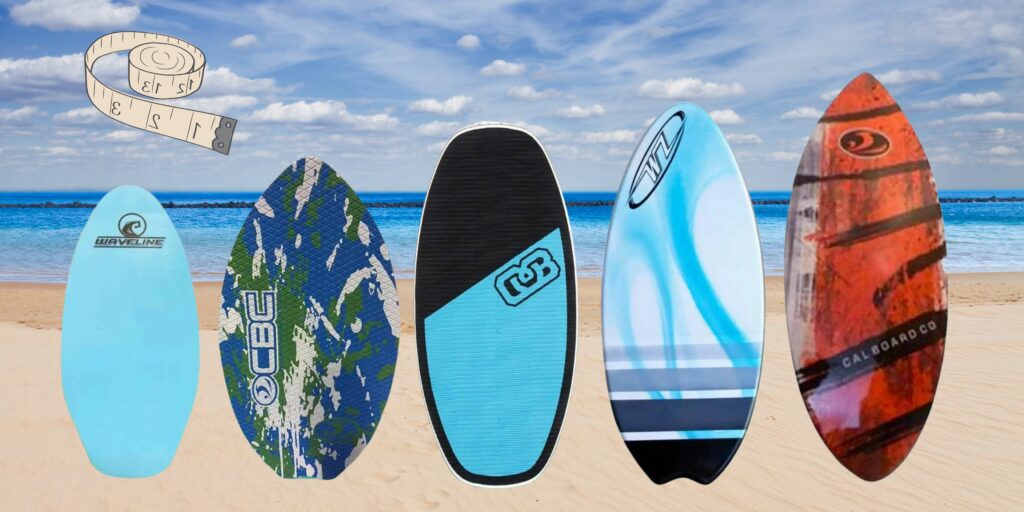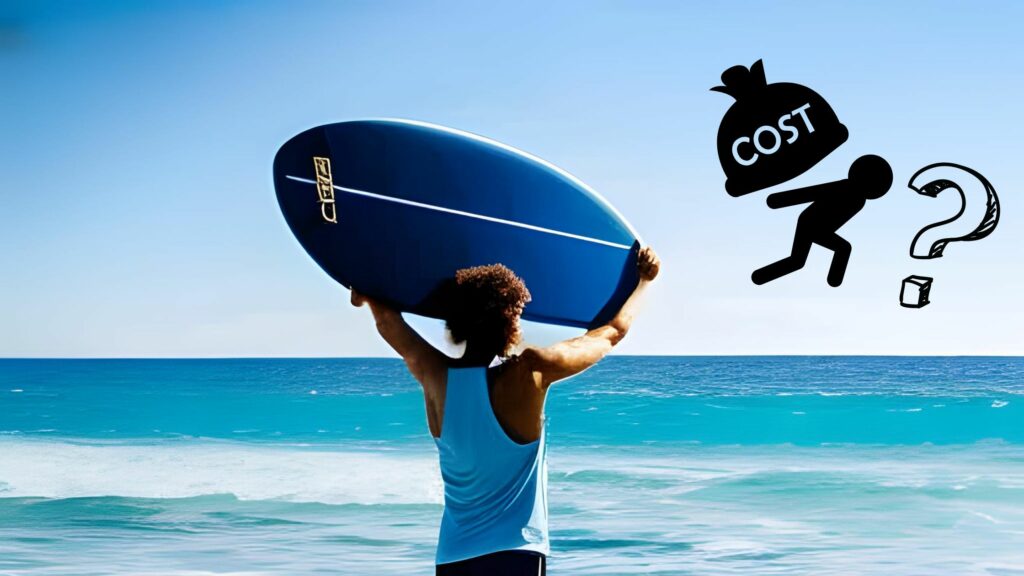Skimboarding is a thrilling water sport that combines the grace of surfing with the agility of skateboarding. Skimboards, the essential tools for this exhilarating activity, are carefully crafted to enhance performance and durability. But have you ever wondered what are skimboards made of? In this article, we will explore the fascinating world of skimboard construction, uncovering the materials that make these boards glide and carve with such precision.

Modern Materials used to make Skimboards
Today, skimboards are made from a variety of materials, each with its own unique characteristics. Let’s take a closer look at some of the common materials used in the construction of modern skimboards.
Fiberglass
Fiberglass remains a popular choice in skimboard construction due to its excellent strength-to-weight ratio. It consists of thin layers of fiberglass cloth infused with epoxy resin, creating a lightweight and durable board. Fiberglass skimboards offer great flexibility and responsiveness, allowing riders to perform tricks with precision.
Carbon Fiber
For those seeking the pinnacle of performance, carbon fiber skimboards are a top choice. Carbon fiber provides incredible strength while maintaining a lightweight profile. These high-performance skimboards are ideal for experienced riders who demand maximum speed and responsiveness.
Epoxy
Epoxy resin has gained popularity as a versatile material in skimboard construction. It offers enhanced durability, resistance to water damage, and a smooth finish. Epoxy skimboards are often favored by riders who prioritize longevity and performance.
Wood
Wood has been a traditional material for skimboard construction since the sport’s inception. Maple, poplar, and other hardwoods are commonly used due to their strength and natural flex. Wood skimboards offer a classic feel and are favored by riders seeking a more organic experience.
Hybrid Constructions
Hybrid skimboards combine the best characteristics of different materials to create unique performance profiles. By blending materials such as fiberglass, carbon fiber, and wood, manufacturers can tailor a board’s properties to cater to specific riding styles and preferences.
The Role of Core Material Used
The core material of a skimboard plays a crucial role in its buoyancy, durability, and overall performance. Let’s explore two common core materials used in skimboard construction.
Polyurethane Foam Core
Polyurethane foam cores have long been a staple in the construction of high-quality skimboards. These cores provide excellent buoyancy and impact resistance while maintaining a lightweight profile. Polyurethane foam allows for precise shaping and contouring, enabling manufacturers to create boards with optimal performance characteristics.
Expanded Polystyrene (EPS) Core
Expanded polystyrene (EPS) cores have gained popularity in recent years due to their lightweight and buoyant nature. EPS cores offer exceptional shock absorption and are often used in high-performance skimboards. This material allows for precise tuning of the board’s flex, contributing to improved maneuverability.
Deck and Bottom Layers
The deck and bottom layers of a skimboard serve to protect the core and enhance the rider’s grip and control. Let’s explore some of the common components used in this part of skimboard construction.
Gel Coat
The gel coat is a layer of protective resin applied to the deck and bottom of the skimboard. It provides a smooth and glossy finish while offering resistance to water, UV rays, and scratches.
EVA Foam
EVA foam, also known as ethylene-vinyl acetate foam, is often used on the deck of a skimboard. This soft and grippy material enhances traction and provides a comfortable surface for the rider’s feet.
Traction Pads
Traction pads, typically made of EVA foam, are strategically placed on the deck of the skimboard to provide additional grip. These pads help the rider maintain control during high-speed maneuvers and tricks.
Clear Coat
The clear coat is a protective layer applied over the gel coat to enhance durability and resistance to water and UV damage. It ensures that the skimboard maintains its performance and aesthetics over time.
Pros and Cons of Different Skimboard Materials
Each type of skimboard material has its own advantages and considerations. Let’s explore the pros and cons of some commonly used skimboard materials to help you make an informed decision.
Fiberglass Skimboards
Pros:
- Lightweight and durable
- Excellent flexibility for tricks and maneuvers
- Smooth and predictable performance
Cons:
- More prone to delamination if not properly cared for
- Can be relatively expensive compared to other materials
Carbon Fiber Skimboards
Pros:
- Exceptional strength-to-weight ratio
- Maximum speed and responsiveness
- Ideal for advanced riders seeking high-performance
Cons:
- Higher cost compared to other materials
- Less forgiving in rough or choppy water conditions
Epoxy Skimboards
Pros:
- Enhanced durability and resistance to water damage
- Smooth finish and aesthetic appeal
- Suitable for riders prioritizing longevity
Cons:
- Slightly heavier than other materials
- May lack the same level of flexibility as fiberglass or carbon fiber
Wood Skimboards
Pros:
- Classic feel and aesthetic
- Natural flex and responsiveness
- Cost-effective option for beginners or casual riders
Cons:
- Susceptible to water damage if not properly sealed or maintained
- Heavier compared to other materials, affecting maneuverability
Conclusion
Skimboarding is a captivating water sport that continues to evolve with advancements in material technology and construction techniques. Skimboards are crafted with precision and care, utilizing a variety of materials to optimize performance, durability, and rider experience. Whether you prefer the lightweight and flexibility of fiberglass, the strength of carbon fiber, the durability of epoxy, or the classic feel of wood, there is a skimboard suited to your style and skill level. Remember to maintain and care for your skimboard to ensure its longevity and performance, and consider the environmental impact of your choices. Now, it’s time to grab your skimboard and embark on an exhilarating journey across the waves!
I am Fornillos Bogs, a seasoned professional surfer and accomplished skimboarder originally from Tanauan, Leyte, Philippines. With a remarkable background in both sports, I have carved my niche in the aquatic world. Currently, I reside in Quezon City, Philippines, known for my exceptional skills on the waves and impressive performances in skimboarding competitions. My journey from the serene shores of Tanauan to the bustling city of Quezon City serves as an inspiring testament to my dedication and passion for riding the waves.


